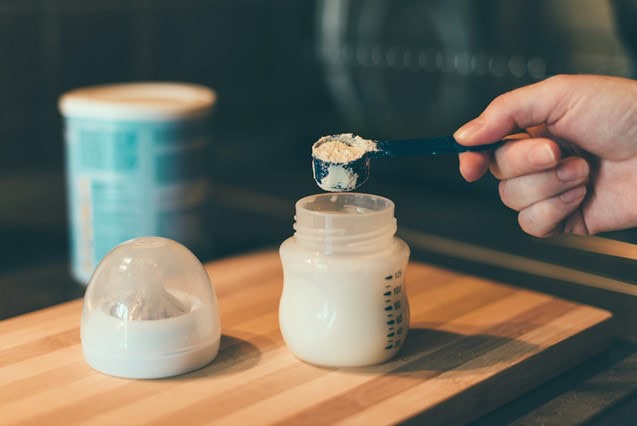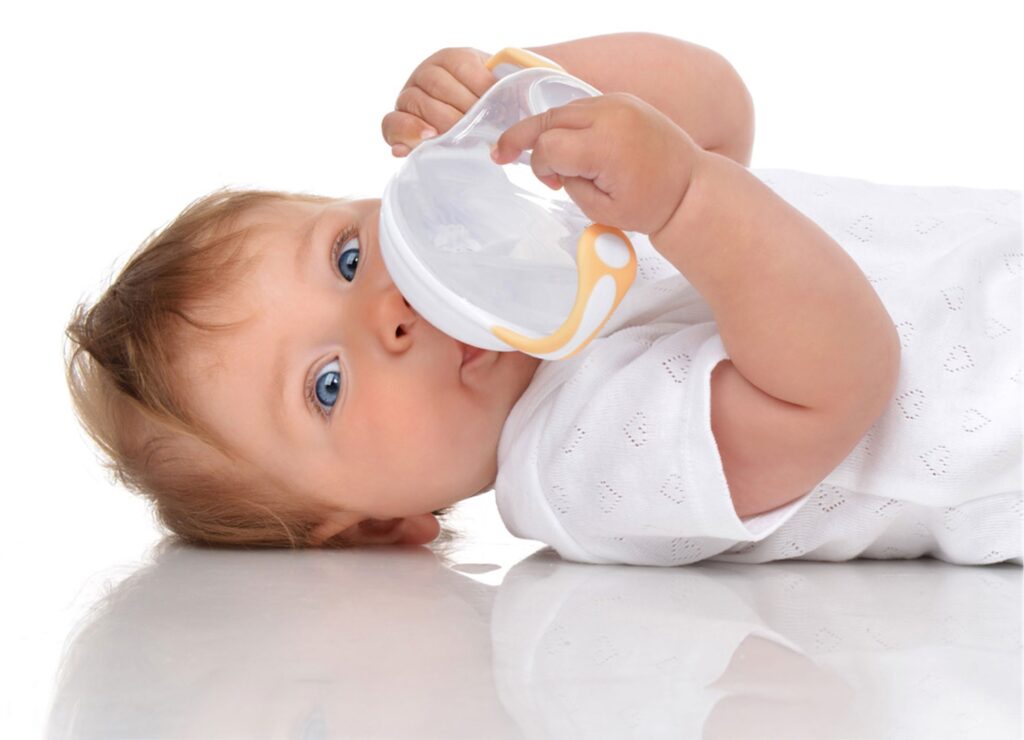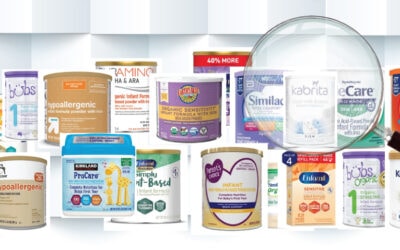An Introduction to our Research
Article 2 in the Got Real Milk Series
Given the critical importance of ensuring the safety of baby food, the involvement of citizen scientists in testing for toxic metals cannot be overstated. Baby food, a primary nutritional source for infants, must be free from contaminants that could impair their health and development. Recent investigations have revealed concerning levels of toxic metals like arsenic, lead, cadmium, aluminum, and mercury in various baby food products. These findings underscore the need for vigilant monitoring.
Citizen scientists, equipped with the appropriate tools and methods, can play a pivotal role in this ongoing vigilance by conducting independent tests taking over the role that was supposed to be performed by regulatory agencies. Our participation democratizes the monitoring process, increases transparency, and builds a larger dataset from which safer standards and practices can be developed. By contributing to such initiatives, citizen scientists help uphold public health standards, pressuring manufacturers, and regulatory bodies to address potential risks proactively and protect our most vulnerable population — infants.
The regulatory scrutiny historically given to baby food compared to baby formula stems from distinct dietary roles and consumption patterns in infants’ diets. Baby food, including purees and cereals, often incorporates a variety of agricultural ingredients such as fruits, vegetables, and grains, which are susceptible to environmental contamination from pesticides, heavy metals, and other residues. As a result, these products have been subject to testing to ensure they meet safety standards that protect infants from potential toxicants.
Conversely, baby formula, which is designed to be a complete or partial substitute for breast milk, is manufactured through a more controlled process. It involves specific, often synthetic, ingredients designed to mimic the nutritional profile of human milk. This has led to a perception of inherently controlled safety, resulting in less frequent independent testing. However, given the critical role formula plays in the health and development of infants — particularly those for whom it is the sole nutritional source —there is a compelling case for it to undergo scrutiny as rigorous as that for baby food, ensuring it is free from contaminants and safe for our most vulnerable consumers.
Unfortunately, for reasons that are unclear, infant formulas have not been included in recent legislation to ensure baby food safety both state-wide and from federal regulations.[1] AB899 is a California legislative bill signed into law in October, 2023, requiring baby food producers to meet health and safety codes.[2] However, infant formulas were not included in that bill.
Three groups united together (GMOScience.org, Moms Across America, and The New MDs) to evaluate this very question. Twenty infant formulas were tested, 2 samples of each, in April 2024.

Photo Credit: Westonaprice.org
Among the toxic metals tested — arsenic, lead, cadmium, mercury, and aluminum — mercury and lead are particularly notorious for their toxicity to infants and children. However, mercury is often considered the most toxic for babies due to its profound and detrimental effects on the developing nervous system. Exposure to even small amounts of mercury can cause serious health issues in infants, including developmental delays and brain damage. Lead also poses significant health risks, impacting cognitive development and causing neurological and behavioral problems. Both metals are dangerous and should be avoided in environments where children are present.
Health Effects of Cadmium in Babies:
- Bone and Teeth Issues: Chronic exposure to cadmium can lead to disruptions in calcium metabolism and bone mineralization, potentially resulting in weakened bones and teeth abnormalities in children.
- Kidney Damage: Cadmium is known to accumulate in the kidneys, where it can cause damage to renal tissues. This damage can be detrimental in infants, as it may affect kidney function over their lifetime.
- Neurodevelopmental Effects: There is evidence to suggest that cadmium exposure can affect the neurological development of infants, potentially leading to learning difficulties and lowered IQ.
- Growth Retardation: Cadmium exposure can also interfere with the growth of children, leading to stunted growth and development.
- Immune System Impact: Cadmium can affect the immune system, making infants more susceptible to infections.
- Potential Carcinogen: While the direct link in infants is less clear, cadmium is classified as a human carcinogen and could potentially contribute to an increased risk of cancer later in life.
Establishing a specific daily limit for cadmium exposure in babies is challenging due to the metal’s high toxicity and the vulnerability of infants’ developing systems. Cadmium is not a nutrient and has no known beneficial role in the human body; therefore, the safest approach is to minimize exposure as much as possible.
Regulatory agencies like the World Health Organization (WHO) and the US Environmental Protection Agency (EPA) have set limits for cadmium exposure for the general population, but these are not specifically tailored to infants. For example, the WHO suggests a provisional tolerable weekly intake (PTWI) for cadmium, which was re-evaluated to 5.8 micrograms per kilogram of body weight per week. However, this guideline is aimed at the general population, not specifically at infants or children, who are more susceptible to the adverse effects of cadmium.
Given the lack of a specific daily intake limit for babies, the primary focus for parents and caregivers should be on reducing potential exposure sources. This includes:
- Choosing iron-fortified cereals and formulas, as sufficient iron can help reduce the absorption of cadmium.
- Ensuring that baby food and other dietary components are free from contamination.
- Being aware of and mitigating environmental exposures, especially in areas known to be contaminated with cadmium due to pesticide use.
35% of the formulas tested contained cadmium.
This raises the question: Should this issue be a cause for concern?
Health Effects of Mercury in Babies
In infants, mercury primarily affects neurological development. Exposure to even low levels of mercury can disrupt brain function, leading to delays in cognitive and motor skills development, impaired memory, and reduced attention span. The most critical periods of vulnerability to mercury toxicity are during prenatal and early postnatal development, when the neurological system is rapidly evolving.
Methylmercury, the organic form of mercury found in contaminated fish and seafood, is especially dangerous. It easily crosses both the placenta and the blood-brain barrier, directly affecting the fetal and infant brain. Studies have shown that prenatal exposure to methylmercury is associated with developmental deficits, including poorer performance on tests of language, attention, and fine motor skills, as well as visual-spatial abilities.
Furthermore, mercury exposure has been linked to other health issues in infants, such as impairments to the cardiovascular system and immune function. The body’s ability to detoxify and excrete mercury is limited in infants, compounding the risk and potential for long-term accumulation.
Regulatory agencies such as the US EPA and the Food and Drug Administration (FDA) do not set a specific daily mercury limit targeted solely at infants. However, they provide guidance on safe consumption levels primarily through recommendations on fish consumption, which is a major dietary source of methylmercury, the form of mercury most concerning for human health. Infant formulas have not been addressed.
The EPA has established a reference dose (RfD) for methylmercury, which is an estimate of the daily exposure to the human population (including sensitive subgroups) that is likely to be without an appreciable risk of deleterious effects during a lifetime. The current RfD for methylmercury is 0.1 micrograms per kilogram of body weight per day. This guideline is intended to protect the most sensitive individuals, including pregnant women and young children, from the neurotoxic effects of methylmercury.
55% of the formulas tested contained mercury.
Health Effects of Arsenic in Babies
In infants, arsenic exposure is particularly concerning due to their smaller body size and developing systems, making them more vulnerable to the toxic effects. Chronic exposure to arsenic in babies can lead to severe health problems including developmental delays, lower IQ scores, and increased risks of cancer later in life. Additionally, arsenic has been linked to adverse effects on the cardiovascular system and immune function. It also poses risks of skin lesions and changes in pigmentation.
Recognizing the dangers posed by arsenic, regulatory agencies have established guidelines and limits to protect public health, particularly for vulnerable populations like infants, however, how this data was created is not clear:
- World Health Organization (WHO): The WHO has set a guideline for arsenic in drinking water at 10 micrograms per liter (µg/L) to minimize the risks of arsenic-related health effects.
- US EPA: In the United States, the EPA has established the same standard for arsenic in drinking water at 10 µg/L under the Safe Drinking Water Act to protect consumers against the effects of long-term, chronic exposure to arsenic.
- FDA: Concerning food, especially rice products consumed by infants, the FDA proposed a limit of 100 parts per billion (ppb) for inorganic arsenic in infant rice cereal. This limit aims to reduce infants’ exposure to arsenic from one of the most common first foods.
Infant formulas have not been addressed.
57.5% of the formulas tested contained arsenic.
Health Effects of Aluminum in Babies
Aluminum exposure in infants can lead to various health issues. It is known to have a neurotoxic effect, potentially affecting neurological development and function. This is particularly concerning in neonates and young infants, who have an underdeveloped blood-brain barrier that may allow greater aluminum passage from blood into brain tissue. Studies have shown that high levels of aluminum exposure in infants can contribute to neurodevelopmental disorders and impair cognitive development. There is excellent data linking the autism epidemic in American children directly to aluminum (as well as cadmium and mercury).[3]
Additionally, aluminum overload can negatively impact bone health. It competes with calcium for absorption, potentially leading to bone demineralization and affecting the growth and health of bones in infants and young children.
Regulatory Limits on Aluminum Exposure:
Despite these concerns, specific regulatory limits for aluminum exposure in infants are not as clearly defined as those for other metals like lead or mercury.
- FDA: The FDA has set limits on aluminum concentrations in parenteral nutrition solutions to reduce exposure risks in neonates and infants. These limits are set at no more than 25 micrograms per liter (µg/L) for parenterally administered products.
- European Food Safety Authority (EFSA): The EFSA has proposed a tolerable weekly intake (TWI) of 1 milligram per kilogram body weight per week for aluminum, acknowledging that infants are particularly at risk due to their immature kidneys and higher relative exposure from dietary sources (including formula).
Guidance for Minimizing Exposure:
Given the potential risks, it is advisable for parents and caregivers to minimize infants’ exposure to aluminum. This can include:
- Choosing baby formulas with lower aluminum levels, particularly when formula is a significant part of the diet. This must be advertised and published via a global public policy directive.
- Being cautious with the use of aluminum-containing medications and vaccines, discussing with healthcare providers the necessity and timing of such treatments.
- Avoiding the use of aluminum cookware or containers, especially with acidic foods, which can increase aluminum leaching.
100% of the formulas tested contained aluminum 1000 times greater (ppm vs ppb) than the other 4 metals tested.
Health Effects of Lead in Babies
In babies, lead exposure can lead to profound and persistent adverse effects. Neurologically, it can cause developmental delays, reduced IQ, behavioral problems, and learning difficulties. Physically, lead exposure has been associated with decreased growth and hearing impairment. Furthermore, at higher levels, lead exposure can affect almost every system in the body, including the nervous and immune systems, and can cause severe gastrointestinal issues.
Recognizing the gravity of lead’s health implications, regulatory agencies have set stringent limits on lead exposure which have not found their way into infant formulas:
- US Centers for Disease Control and Prevention (CDC): The CDC has indicated that there is no known safe blood lead level in children, and any exposure should be addressed. However, intervention is recommended for children with blood lead levels higher than 3.5 micrograms per deciliter (µg/dL), though recent research suggests that even lower levels may still have detrimental effects.
- EPA: The EPA has set the maximum contaminant level goal (MCLG) for lead in public drinking water systems at zero, recognizing that no safe level of lead exposure has been identified. However, the action level, at which remediation is required, is set at 15 parts per billion (ppb) in water.
- WHO: The WHO also acknowledges that lead exposure is harmful with no apparent safe threshold and advises minimizing lead exposure to the fullest extent possible.
100% of the formulas tested contained lead (not from added water)
What are the Effects of Toxic Metal Mixtures in Babies
Little research has been done on the detrimental outcomes from the combined impacts of a multitude of toxic metals in babies. One study examined neurobehavioral findings in newborns exposed to a prenatal mixture at low levels and found adverse outcomes. (https://www.ncbi.nlm.nih.gov/pmc/articles/PMC8835549/)
In 2021, the American Academy of Pediatrics (AAP:https://www.aap.org/en/news-room/news-releases/aap/2021/aap-statement-on-fda-announcement-regarding-toxic-metals-in-baby-and-toddler-food/) commended the FDA on its announcement that formula and baby food would be made as safe as possible. While the Closer to Action Plan (https://www.fda.gov/food/environmental-contaminants-food/closer-zero-reducing-childhood-exposure-contaminants-foods) is an excellent document, safeguards are still not yet in place.

Glyphosate and Toxic Metals
Citizen scientists, such as Zen Honeycutt, have demonstrated that glyphosate has also been found in infant formulas shown in research conducted by Moms Across America. A study published by our team member, Dr. Stephanie Seneff, elucidated that aluminum can work synergistically with glyphosate to induce neurological harm.[1] Glyphosate, an antibiotic patented by Monsanto (now Bayer), causes microbial disruption leading to an overgrowth of pathogens, such as Clostridia. The by-products of these types of pathogens are linked to autism. Additionally, glyphosate can shuttle aluminum across the gut barrier and the blood-brain-barrier.
Recommendations
- Immediate evaluation/testing of infant formulas presently on the market for toxic metals by the FDA with a subsequent urgent assessment/call for action.
- Public health policy promotion of those formulas deemed to be least toxic for parents.
- Steps parents can implement at home to mitigate toxicity (i.e., not using tap water to prepare the formulas), maintaining adequate levels of iron in their babies, removing concomitant sources of toxic metals, etc.
References:
- https://www.fda.gov/food/resources-you-food/infant-formula#oversee
- https://www.fda.gov/food/resources-you-food/infant-formula
- https://www.fda.gov/food/buy-store-serve-safe-food/handling-infant-formula-safely-what-you-need-know
- https://www.fda.gov/food/consumers/agricultural-biotechnology
- https://www.fda.gov/food/people-risk-foodborne-illness/food-safety-infants-toddlers
- https://www.fda.gov/food/infant-formula-guidance-documents-regulatory-information/enforcement-discretion-manufacturers-increase-infant-formula-supplies#regular
- https://www.fda.gov/media/71695/download?attachment
- https://www.scirp.org/journal/paperinformation?paperid=53106
- https://www.researchgate.net/profile/David-Kennedy-40/publication/333582853_Environmental_toxicants_and_infant_mortality_in_America_Peertechz_Journal_of_Biological_Research_and_Development_11_36-61/links/5d111f6592851cf440492ee1/Environmental-toxicants-and-infant-mortality-in-America-Peertechz-Journal-of-Biological-Research-and-Development-11-36-61.pdf
- unsafe at any level
- https://reneedufault.com/
- https://gmoscience.org/
- https://www.momsacrossamerica.com/
- https://www.ewg.org/research/ewgs-guide-infant-formula-and-baby-bottles
- https://www.inonaround.org/baby-formula/
[1] https://www.cdph.ca.gov/Programs/CEH/DFDCS/CDPH%20Document%20Library/FDB/FoodSafetyProgram/PFR/AB899FrequentlyAskedQuestions.pdf
[2] https://leginfo.legislature.ca.gov/faces/billCompareClient.xhtml?bill_id=202320240AB899&showamends=false



